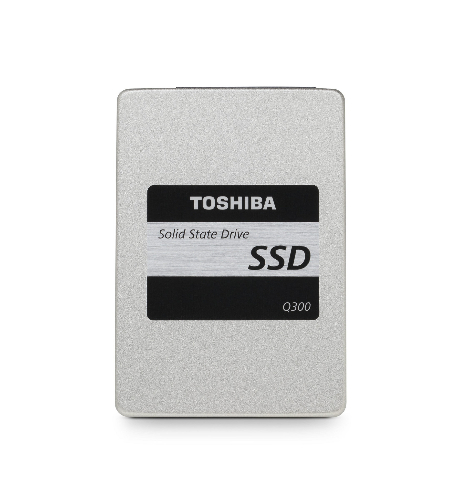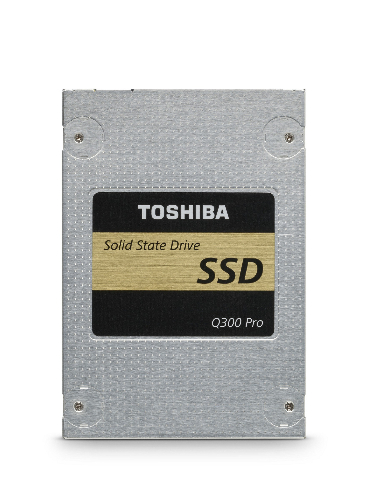Toshiba Announces Q300 And Q300 Pro Client SSDs
Along with SK Hynix, Toshiba is one of the NAND flash manufacturers that we rarely hear about in the client space. Toshiba has a long list of client SSDs built with in-house controllers and with the company's own NAND flash. Complicated product names and odd release times have kept many of these products out of review charts, but in the previous generation, the company moved to a more reasonable naming scheme.
Two new models dubbed Q300 and Q300 Pro should receive more attention than previous products like the "THNSNFxxxGMCS." The new products use Toshiba's Quadruple Swing-by Code error correction that the company claims is more powerful and efficient than BCH and LDPC used in other controllers shipping today.
The new Q300 Series features 3-bit-per-cell NAND flash and pairs it with Toshiba's TC358790 controller. The sequential performance is said to be 550 MB/s read and 530 MB/s write. Random performance is aided by pSLC that uses a dynamic amount of NAND in SLC mode to achieve 87,000 random read IOPS and 83,000 random write IOPS.
The Q300 ships in four capacity sizes, 960 GB (MSRP $449.99), 480 GB ($309.99), 240 GB ($159.99) and 120 GB ($99.99). This series is also backed by a three-year warranty.
The Toshiba Q300 Pro with 2-bit-per-cell NAND flash was designed for gamers, enthusiasts and power users. The Pro model uses a Toshiba TC58NC1000 controller that allows the combination to achieve up to 550 MB/s sequential read and 520 MB/s sequential write performance. The random read performance inches up to 92,000 random read IOPS but has lower random write performance than the base Q300. The random write performance dips down to 63,000 IOPS.
The Q300 Pro only comes in three capacity sizes: 512 GB (MSRP $389.99), 256 GB ($199.99), and 128 GB ($124.99). The warranty does increase to five years on the X300 Pro.
The new Q300 series products went on sale for preorder last week on Toshiba's website. Q300 models begin shipping September 4, and the Q300 Pro models begin shipping later in the month, on September 21.
Get Tom's Hardware's best news and in-depth reviews, straight to your inbox.

Chris Ramseyer was a senior contributing editor for Tom's Hardware. He tested and reviewed consumer storage.
-
rgd1101 Reply16570907 said:WTF? what happened to 3D? where are the big SSD
this http://www.tomshardware.com/news/micron-intel-3d-xpoint-memory,29690.html ? it won't be out until 2016, the earliest, and it will be more expensive. -
pelegbn What makes the pro version more suitable for gamers, enthusiasts and power users then the normal version (or any other modern SSD for that matter)?Reply
As far as I know, even between HDD and SSD there wont be any performance difference when it comes to gaming and rendering. Only the GPU and CPU matters... So what is so special in these Pro SSDs? -
CRamseyer Reply16570907 said:WTF? what happened to 3D? where are the big SSD
this http://www.tomshardware.com/news/micron-intel-3d-xpoint-memory,29690.html ? it won't be out until 2016, the earliest, and it will be more expensive.
Toshiba is working on 3D as well under the name BiCS. We may see it this year but I'm thinking sometime inside 2016.


